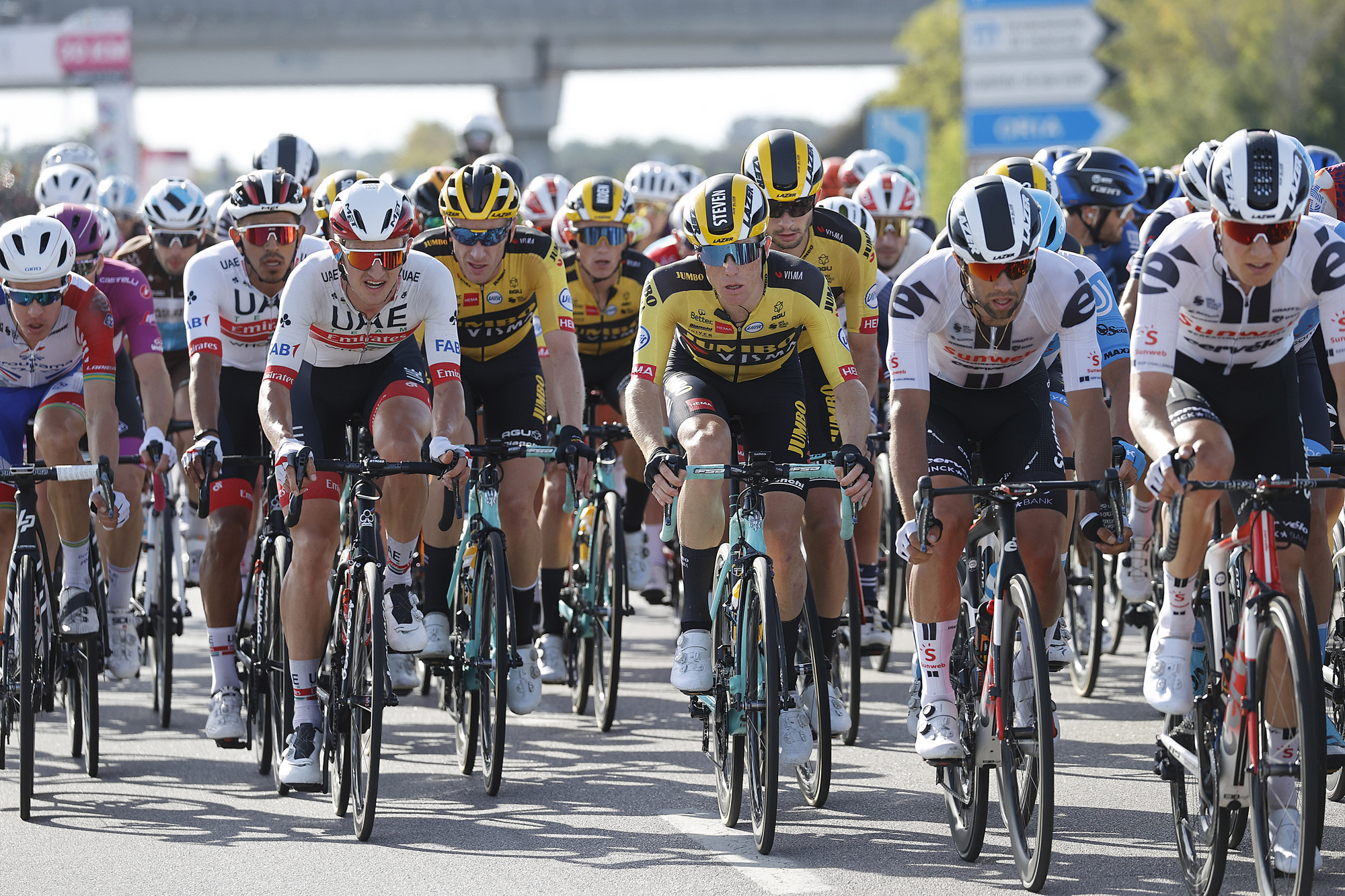Kruijswijk and Jumbo-Visma try to force an opportunity at Giro d'Italia
Dutch squad split peloton on road to Brindisi

In the Giro d’Italia of yesteryear, when padroni like Francesco Moser and Giuseppe Saronni dictated the terms of engagement, the opening phase of a stage like Friday’s might have ticked by relatively gently. In modern cycling, however, every kilometre of every stage counts.
The short and flat run from Brindisi lent itself obviously to a bunch sprint, but the exposed nature of the course left the peloton vulnerable to a stiff wind. Steven Kruijswijk, backed by a Jumbo-Visma squad containing rouleurs such as Tony Martin and Jos van Emden, sensed an opportunity.
So, too, did directeur sportif Addy Engels, who encouraged his charges to force the pace early in a bid to catch some of Kruijswijk’s GC rivals unawares.
“Everybody knew there would be crosswind, so the element of surprise was difficult,” Engels said afterwards. “When I spoke with the guys, I said it would be good to start early to still have a surprising effect.”
Six kilometres along the Strada Statale 7 out of Matera, where Pier Paolo Pasolini filmed The Gospel According to St. Matthew, Jumbo-Visma chose to unleash hell, or some form of it. The pace-making shattered the peloton into shards, with Jakob Fuglsang (Astana), Rafal Majka (Bora-Hansgrohe), Simon Yates (Mitchelton-Scott), and Domenico Pozzovivo (NTT Pro Cycling) among those caught on the wrong foot.
“We already planned to do something at the 6k mark because the wind was from behind and then it turned into a crosswind, so we took the initiative there,” Kruijswijk said. “I think we were there with five guys from our team. We started pulling and the bunch split.”
Kruijswijk and his Jumbo-Visma cohort had 30 or so riders for company in the front group, including the ever-vigilant Vincenzo Nibali (Trek-Segafredo). At one point, their lead over the third group on the road stretched towards a minute, but the sheer volume of sprinters at the head of the race had an impact on their collaboration.
Get The Leadout Newsletter
The latest race content, interviews, features, reviews and expert buying guides, direct to your inbox!
“We looked back and there were a few dropped riders, but there were also a few sprinters in the group who didn’t want to work with us, of course,” said Kruijswijk. “The others came back, and we saw it’s not for today to make a split again.”
Engels, for his part, felt that the dearth of GC contenders in the lead group also doomed Jumbo-Visma’s move. Behind, men like Fulgang and Majka, as well as Yates and Pozzovivo, were able to find common cause and fight their way back into the race.
“I think we just needed one or two GC guys more in the front,” Engels said. “There would have been a little bit less cohesion in the back. But that’s racing.”
Jumbo-Visma’s early show of force helped to ensure the day would go down as the fastest road stage in Giro history, with winner Arnaud Démare (Groupama-FDJ) averaging some 51.234 kph over the 143 kilometres. Not even a crash in the final 40km, which saw a sizeable portion of the field tailed off, could temper the stinging speed as the peloton hurtled towards Brindisi far ahead of the fastest predicted schedule.
On the final approach to the finish, Kruijswijk and his Jumbo-Visma guard were again prominent, and the Dutchman sat third wheel inside the final kilometre behind Martin and Van Emden before finishing safely in the peloton. Kruijswijk now lies eighth overall, 1:21 down on maglia rosa João Almeida (Deceuninck-QuickStep).
“You have to ask Tony and Jos,” Kruijswijk grinned when asked why he had been on the front in the final kilometre. “I’ve got such strong guys on the team, and it’s always better to sit on the front, even with the 3k rule, you don’t want to crash.
“There’s a lot of bouncing and fighting around and you can choose to sit a little bit back or you can sit in front. I’ve got two guys who have the power to sit in front and do a sort of sprint lead out so that’s quite easy for me. I go in pole position for the last ‘k’ and I can pedal to the finish without doing any big efforts.”
Big efforts are precisely what await Kruijswijk and his general classification rivals this weekend. Saturday’s finale on the Gargano peninsula features the 17 per cent slopes of the short ramp up Via Saragat outside Vieste, while stage 9 finishes on the category 1 haul to Roccaraso, approached from a different route to the Giro’s last visit four years ago.
“It will be hard,” Kruijswijk said. “It’s the last day before the rest day so for sure there will be opportunities to try something.”
At the Giro, there always are opportunities, even on the flattest day of the race.

Barry Ryan was Head of Features at Cyclingnews. He has covered professional cycling since 2010, reporting from the Tour de France, Giro d’Italia and events from Argentina to Japan. His writing has appeared in The Independent, Procycling and Cycling Plus. He is the author of The Ascent: Sean Kelly, Stephen Roche and the Rise of Irish Cycling’s Golden Generation, published by Gill Books.